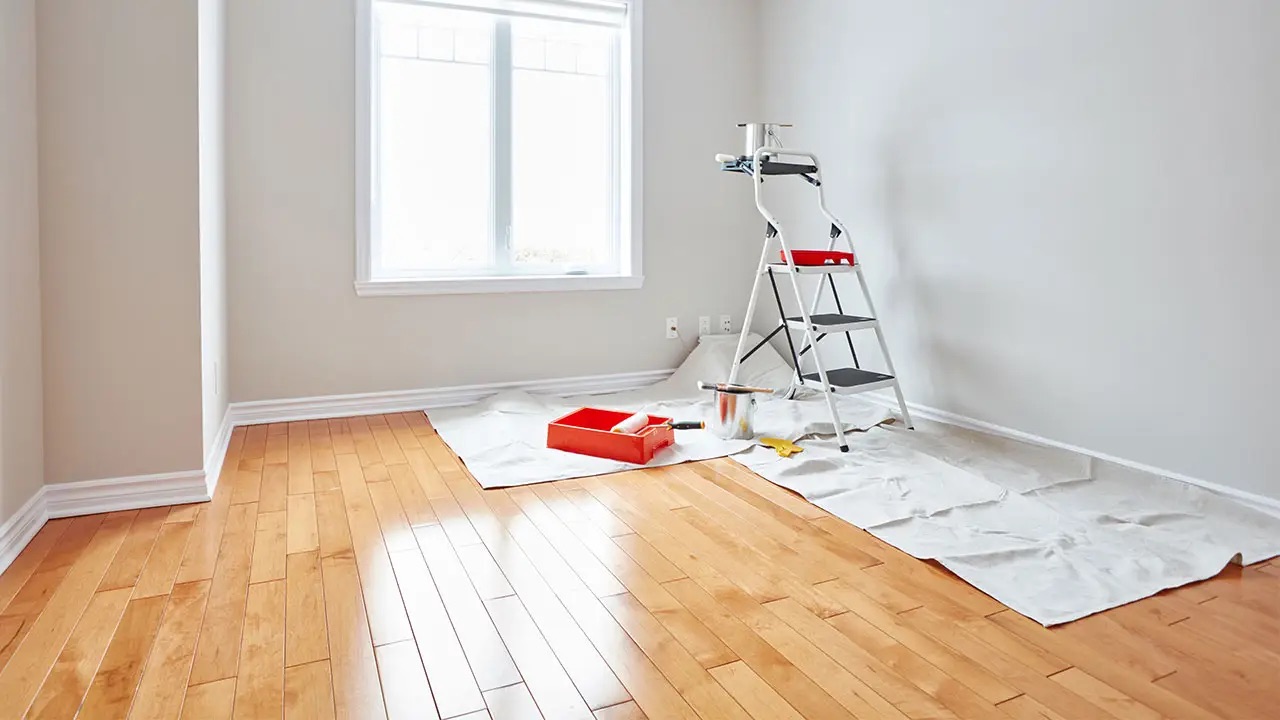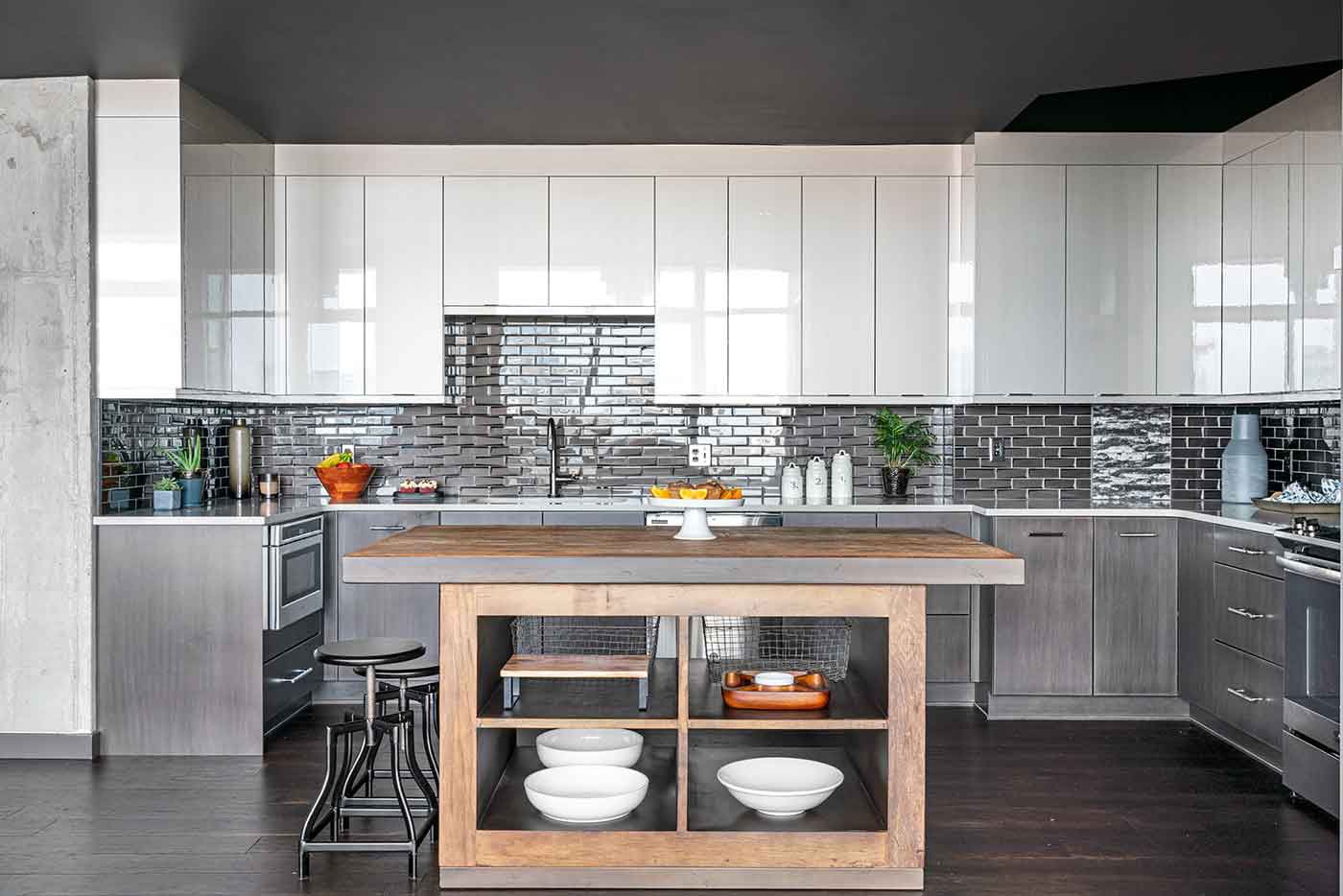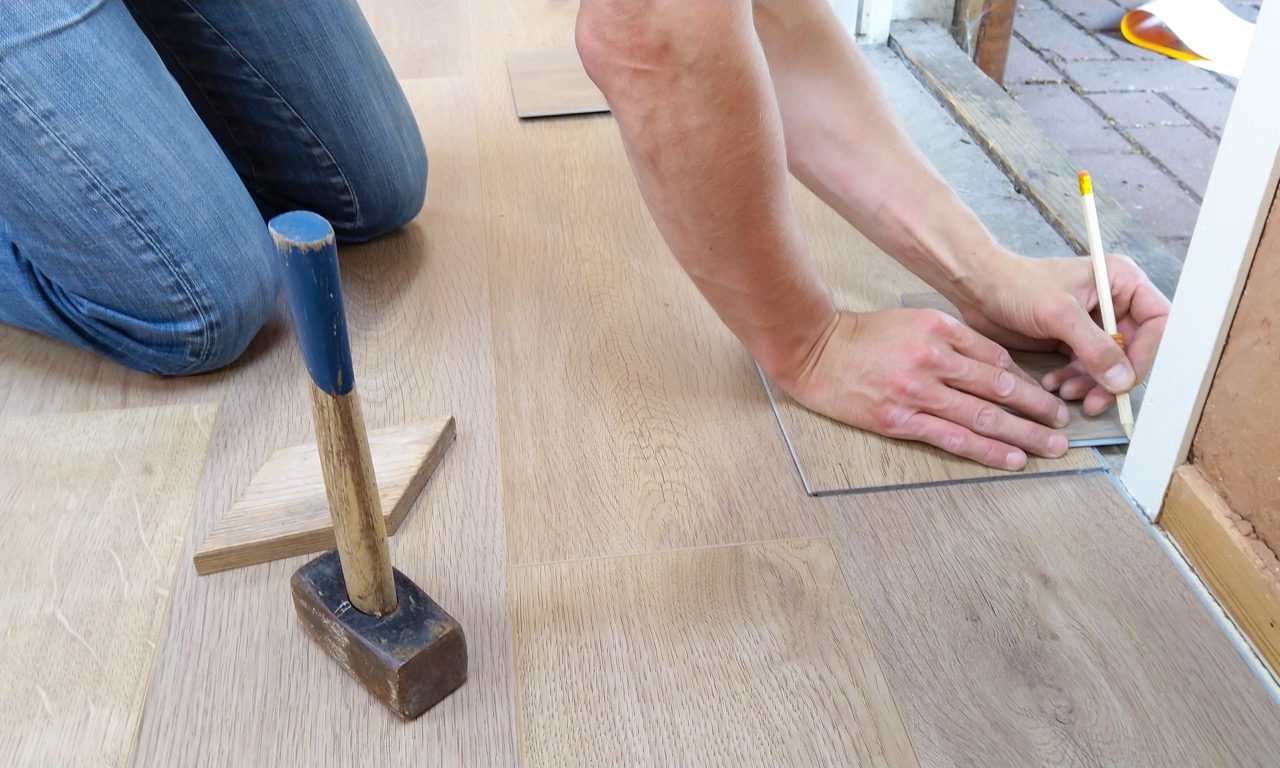Home>Articles>7 Common Remodeling Mistakes And How To Avoid Them


Articles
7 Common Remodeling Mistakes And How To Avoid Them
Modified: December 7, 2023
Learn about the 7 most common remodeling mistakes and discover expert tips on how to avoid them. Read more articles on home renovations and remodeling.
(Many of the links in this article redirect to a specific reviewed product. Your purchase of these products through affiliate links helps to generate commission for Storables.com, at no extra cost. Learn more)
Introduction
Embarking on a remodeling project can be an exciting and transformative experience for homeowners. Whether you’re updating your kitchen, renovating your bathroom, or adding an extension to your home, the prospect of creating a space that reflects your personal style and meets your needs is undeniably enticing. However, it’s important to approach remodeling projects with careful planning and consideration to avoid common mistakes that can turn your dream renovation into a nightmare.
In this article, we will explore seven common remodeling mistakes and provide valuable insights on how to avoid them. By being aware of these pitfalls and learning from the experiences of others, you can ensure a smoother and more successful remodeling journey.
Key Takeaways:
- Proper planning, realistic budgeting, and effective communication with contractors are crucial to avoiding common remodeling mistakes. By prioritizing these elements, homeowners can ensure a successful and stress-free renovation experience.
- Neglecting the design phase and failing to obtain necessary permits can lead to costly errors and legal complications. Homeowners should prioritize thorough planning, adherence to regulations, and collaboration with professionals to achieve their remodeling goals.
Mistake 1: Underestimating the Budget
One of the most significant mistakes homeowners make when embarking on a remodeling project is underestimating the budget. It’s easy to get caught up in the excitement of improving your home and overlook the financial implications of the project.
Underestimating the budget can lead to several issues. First and foremost, it can result in running out of funds before the project is complete, leaving you with an unfinished and unusable space. This can be incredibly frustrating and can prolong the disruption to your daily life.
To avoid this mistake, it’s crucial to thoroughly research and calculate all the costs associated with your remodeling project. Consider not only the materials and labor but also any additional expenses such as permits, design fees, and unexpected contingencies. It’s always a good idea to add a buffer to your budget for unforeseen costs that may arise during the renovation process.
Consulting with professionals, such as contractors or interior designers, can also help you get a more accurate estimate of the costs involved. They can offer insights into the potential expenses and suggest cost-effective alternatives or modifications to stay within your budget.
Lastly, be realistic about what you can afford. It’s essential to set a budget that aligns with your financial situation and stick to it. It’s tempting to want the best of everything, but remember that there are always ways to achieve your desired outcome within your budget limitations. Prioritize your needs and be willing to compromise on certain elements to stay within your financial means.
By adequately budgeting and considering all the associated costs of your remodeling project, you can avoid the stress and disappointment of running out of funds before completion.
Mistake 2: Failing to Plan Ahead
A crucial mistake many homeowners make when undergoing a remodeling project is failing to plan ahead. It’s easy to get caught up in the excitement of the renovation and jump straight into the construction phase without proper planning.
Planning ahead is essential for a successful remodeling project. It allows you to envision the desired outcome, make informed decisions, and avoid costly mistakes along the way.
Start by defining your goals and objectives. What do you want to achieve with your renovation? Is it more space, increased functionality, or a cosmetic upgrade? Understanding your motivations will help you prioritize and allocate resources effectively.
Next, create a detailed plan that outlines every aspect of the project. Consider the layout, materials, color schemes, and any specific requirements or preferences. Having a clear plan will not only help you stay organized, but it will also serve as a reference for contractors and designers, ensuring everyone is on the same page.
Furthermore, in the planning phase, be sure to consider the timeline of the project. Will you need to move out temporarily? Are there any seasonal factors that may impact the construction? By accounting for these considerations in advance, you can minimize disruptions to your daily life and ensure a smoother transition during the remodeling process.
Another important aspect of planning is obtaining the necessary permits and approvals. Depending on the scope of the project, you may need to acquire permits from local authorities. Failing to do so can lead to delays, fines, or even having to undo completed work. Research the requirements in your area and factor in the time it takes to obtain the necessary permits into your project timeline.
Lastly, don’t forget to plan for any potential challenges or unexpected issues that may arise during the renovation. Having contingency plans in place will help you navigate through uncertainties and keep the project on track.
By taking the time to plan ahead and considering all the essential elements of your remodeling project, you can avoid unnecessary complications and ensure a successful outcome.
Mistake 3: Ignoring Permit Requirements
One common and risky mistake homeowners make during a remodeling project is ignoring or neglecting the necessary permit requirements. Permits are legal documents that grant permission to undertake specific construction or renovation work, ensuring compliance with safety codes and regulations. Failing to obtain the required permits can have severe consequences and potentially lead to fines, delays, or the need to undo completed work.
Ignoring permit requirements may seem like a time and cost-saving measure in the short term, but it can result in significant difficulties down the line. Building authorities enforce permits to protect the safety and welfare of both homeowners and the community as a whole. Unpermitted work can lead to construction that does not meet safety standards or violates zoning laws, which can pose a threat to the occupants and may even affect the resale value of the property.
Each jurisdiction has its own set of rules and regulations regarding permits, so it’s crucial to research and understand the specific requirements in your area before starting a remodeling project. Check with your local building department or consult with a professional contractor or architect who is familiar with the permitting process.
Typically, permits are required for projects such as structural modifications, electrical and plumbing work, additions, and significant cosmetic changes. Even seemingly minor tasks like installing a new water heater or replacing windows may require permits, depending on local regulations.
Obtaining permits may involve submitting plans, paying fees, and undergoing inspections at various stages of the renovation process. It’s important to factor in the time and costs associated with permits when planning your project to avoid delays or unexpected expenses.
By following the proper procedures and obtaining the necessary permits, you can ensure your remodeling project is in compliance with legal requirements and promote the safety and well-being of your home and its occupants.
When planning a remodeling project, make sure to set a realistic budget and stick to it. Factor in unexpected costs and leave a buffer for any surprises that may arise during the renovation process.
Mistake 4: Hiring the Wrong Contractor
One of the most critical decisions you’ll make during a remodeling project is choosing the right contractor. Hiring the wrong contractor can lead to a multitude of issues, including poor workmanship, missed deadlines, budget overruns, and even legal complications.
When it comes to selecting a contractor, it’s crucial to do your due diligence and thoroughly research your options. Don’t settle for the first contractor you come across or solely rely on recommendations from friends or family. Take the time to interview multiple contractors, ask for references, and review their portfolio of past projects. This will give you a sense of their experience, skill level, and ability to deliver on your vision.
Additionally, ensure that the contractor holds the necessary licenses and certifications required by your local authorities. Construction codes and regulations vary depending on the location, and hiring an unlicensed or uncertified contractor can lead to legal issues and subpar work quality.
Furthermore, it’s essential to have a clear understanding of the contractor’s communication style and how they handle conflicts or changes during the project. Effective communication between you and your contractor is vital for a smooth remodeling process. Make sure you feel comfortable expressing your expectations, concerns, and preferences, and that the contractor is responsive and transparent in their communication.
Obtain detailed written estimates from each contractor, including a breakdown of costs for materials, labor, and any additional fees or charges. It’s crucial to have a comprehensive understanding of the financial implications of the project before signing any contracts.
Don’t base your decision solely on price. While cost is undoubtedly an important factor, choosing the cheapest contractor can sometimes lead to subpar workmanship or the use of low-quality materials. Opt for a contractor who offers competitive pricing but also demonstrates a track record of delivering high-quality results.
Lastly, always make sure to have a written contract in place before any work commences. The contract should outline the project scope, timeline, payment terms, and any other relevant details to protect both parties involved.
By conducting thorough research, vetting potential contractors, and ensuring effective communication, you can increase the likelihood of hiring the right contractor for your remodeling project and avoid headaches and frustrations down the line.
Mistake 5: Neglecting to Set Realistic Timelines
Setting realistic timelines is a crucial part of any remodeling project, yet it is a mistake that many homeowners make. Neglecting to establish feasible and well-planned timelines can lead to frustration, project delays, and increased costs.
When mapping out the timeline for your renovation, it’s essential to consider several factors. Start by discussing the project scope and estimated timeframes with your contractor or design professional. They can provide insight into how long each phase of the project is expected to take based on their experience and expertise.
Avoid making the common mistake of underestimating the time it takes to complete each task. While you may be eager to see the finished result, rushing the process can result in compromised quality and errors. Allow sufficient time for proper planning, obtaining permits, sourcing materials, and completing each stage of the remodel with meticulous attention to detail.
It’s also crucial to be mindful of any external factors that may impact the timeline. Unforeseen issues, such as inclement weather or supply chain delays, can arise during a renovation and may cause unexpected setbacks. By building in a buffer in your timeline, you can account for these unexpected challenges and minimize disruptions to the schedule.
Effective communication with your contractor is paramount to ensuring the project stays on track. Regularly check in with your contractor to assess progress and address any potential issues or concerns. By maintaining an open dialogue, you can quickly address any delays or roadblocks and make necessary adjustments to the timeline.
Remember that remodeling projects often require flexibility. While it’s important to set realistic timelines, it’s also crucial to stay adaptable and be prepared for unexpected changes. Some unforeseen issues may arise during the renovation that require adjustments to the original plan. By being flexible and working closely with your contractor or designer, you can navigate these challenges without compromising the overall project timeline.
Ultimately, setting realistic timelines and being prepared for potential delays will help ensure a smoother and more successful remodeling project. By allowing adequate time for each phase of the renovation and maintaining open communication with your contractor, you can minimize stress and enjoy the process of transforming your living space.
Mistake 6: Skipping the Design Phase
One of the most crucial steps in any remodeling project is the design phase, yet it is a mistake that many homeowners make – skipping or rushing through this stage. Neglecting the design phase can lead to costly mistakes, unsatisfactory results, and a lack of cohesion in the final outcome.
The design phase is where the vision for your remodeling project takes shape. It allows you to conceptualize the desired look and functionality of your renovated space, ensuring that it aligns with your personal style and meets your specific needs.
During the design phase, work closely with a professional designer or architect to discuss your goals, preferences, and any specific requirements you have for your project. They will translate your ideas into a detailed plan that encompasses the layout, materials, colors, and overall aesthetic of the renovation.
Skipping the design phase may seem appealing at first, as it saves time and potentially some upfront costs. However, it is important to recognize that proper planning and design are critical for a successful outcome. Without a well-thought-out design, you may end up with a space that lacks functionality, cohesive style, or fails to meet your expectations.
During the design phase, consider factors such as traffic flow, lighting, storage needs, and spatial requirements. Think about how you will use the space and what elements are most important to you. A good design professional will listen to your input, offer insights and suggestions, and create a comprehensive plan that enhances both the aesthetic appeal and functionality of your renovation.
In addition to the visual aspects, the design phase also allows for detailed cost estimation and planning. By having a complete design in hand, you can obtain accurate quotes from contractors, anticipate material costs, and set a realistic budget for your project.
Remember, a well-designed space can significantly impact your daily life and the overall value of your home. Taking the time to invest in the design phase will help ensure that the end result is a space that reflects your style, enhances functionality, and brings your vision to life.
Mistake 7: Neglecting to Communicate with Your Contractor
A common mistake homeowners make during a remodeling project is neglecting to communicate effectively with their contractor. Clear and open communication is crucial for the success and smooth progression of any renovation, and failing to prioritize this can lead to misunderstandings, delays, and unsatisfactory results.
Establishing effective communication with your contractor starts from the very beginning of the project. It’s important to share your goals, expectations, and preferences with your contractor during the initial consultation. This helps ensure that both parties are on the same page and have a clear understanding of the project scope.
Throughout the remodeling process, maintaining regular and ongoing communication is essential. This includes weekly or bi-weekly meetings to discuss progress, address any concerns, and make decisions. Open lines of communication allow you to stay informed about the project’s status and provide an opportunity to address any issues or changes that may arise along the way.
If you have any questions or uncertainties about the project, don’t hesitate to ask your contractor for clarification. Clear communication helps avoid misunderstandings and ensures that your expectations are met.
Additionally, keeping a written record of all conversations and agreements is vital. This can be done through emails, text messages, or a project management tool. Having documentation of all interactions helps prevent miscommunication and provides a reference point if any disputes or issues arise later on.
When communicating with your contractor, be specific and detailed about your requirements. Provide clear instructions and visuals whenever possible to avoid any ambiguity. This includes sharing your design inspirations or examples, photos of specific finishes or materials you prefer, and any specific functionality needs.
Furthermore, it’s essential to be proactive in addressing any concerns or issues that may arise during the renovation. If something doesn’t meet your expectations or if you notice any errors or discrepancies, bring it up with your contractor immediately. The sooner you address and resolve any issues, the smoother the project will progress.
Remember, effective communication is a two-way street. Encourage your contractor to communicate openly as well, and be receptive to their professional advice and suggestions. A collaborative and communicative relationship between you and your contractor sets the stage for a successful remodeling experience.
By prioritizing clear and open communication throughout the remodeling project, you can build a strong working relationship with your contractor, solve problems effectively, and ensure that your vision for your home is realized.
Frequently Asked Questions about 7 Common Remodeling Mistakes And How To Avoid Them
Was this page helpful?
At Storables.com, we guarantee accurate and reliable information. Our content, validated by Expert Board Contributors, is crafted following stringent Editorial Policies. We're committed to providing you with well-researched, expert-backed insights for all your informational needs.















0 thoughts on “7 Common Remodeling Mistakes And How To Avoid Them”